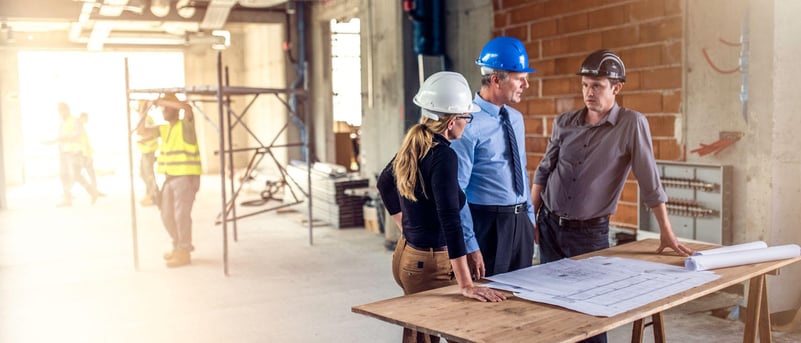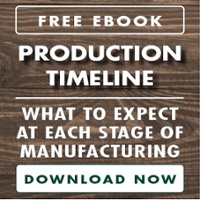
Whether you’re working on a new build or a refresh, hotel projects are complex. And they usually involve multiple entities to complete – everyone from contractors to designers.
No matter the size of your hotel project, an extra set of experienced eyes goes a long way toward keeping things on track and within budget. Even the top hotel owners in the industry have multiple perspectives to ensure a successful project.
Though involved in the last leg of a project, an FF&E (fixtures, furniture, & equipment) installer is a great resource for making sure the project you envision matches the final product. As the last point of contact in your FF&E’s journey, your installer gets your order exactly where it’s supposed to be and exactly how it’s supposed to look and function, and poised to deliver a great guest experience. Finding the right hotel FF&E installer is no different than identifying any other partner for your project – choosing one shouldn’t happen on a whim.
Two Characteristics of the Right Hotel FF&E Installer
Selecting an FF&E installer is a decision that should be carefully considered. Not all FF&E installers are the same or able to provide the level of service your project requires.
When vetting potential hospitality FF&E installers, two characteristics to look into include:
-
Experience
-
Site surveys
1. Experience
Hotel FF&E installation isn’t a job that just anyone can handle, and it certainly shouldn’t be done by someone who has only a few jobs under their belt.
The last thing your project needs is an installer’s lack of experience creating issues for your FF&E schedule. That costs time and money.
An experienced FF&E installer understands the finer points of putting in hospitality casegoods, from placement to constructing them on-site.
They also won’t be an impediment to your project and its progress. A seasoned FF&E installer makes their part of the project a headache-free experience, fitting their work into your project schedule and minimizing crossover with other contractors or daily operations.
With the wisdom of experience, your installer should make one of the final elements of a hotel project the easiest.
2. Site Visits & Surveys
Next to experience, a site visit is the most important thing to look for in a hotel FF&E installer.
There’s nothing worse than having your hotel’s FF&E arrive on-site only to find out that components of your order can’t fit through a door or that the headboards you ordered cover up an electrical outlet.
A site visit & survey completed by your hotel furniture installation services provider before your casegoods are manufactured heads off many issues that create unnecessary delays and FF&E budget overages.
The hospitality furniture installation surveying process generally begins with taking a look at your facility’s blueprints. With a detailed look at the skeleton of your building, your installer is able to account for both seen and unseen components, such as:
-
Blocking
-
Electrical
-
HVAC
-
Plumbing
-
Safety features (for both guests and staff)
-
ADA compliance (last but certainly not least)
A review of your hotel’s schematics is only half of the site survey equation. The other half? A site visit.
During a site visit, your installer is able to actually see where your hotel FF&E will go, the pathways to get there, and any potential impediments. We’ve all heard the horror stories of hotel projects that flopped or ended in lawsuits for cutting corners or failing to factor in important architectural or design components.
A site visit also allows the hotel furniture installer to get a visual of existing furniture and amenities inside a space (think: guestroom) and how the new FF&E will fit around it. Your new FF&E shouldn’t interfere with your furniture or the overall design of a space – both components that contribute to guest comfort and perception of your hotel.
The ‘Must’ Questions to Ask When Vetting Hotel Furniture Installation Services Providers
As it’s been said, the worst question is the unasked one.
Just like with vetting any other service provider or project partner, there’s absolutely no shame in asking as many questions as you need. Your installer is providing a very important service, after all, and it’s one that impacts your project’s budget.
Questions at the top of your list to ask should include:
-
Location: "Where are your warehouses and offices located in relation to our project site?" This helps assess logistical efficiency and potential costs related to shipping and handling.
-
Capabilities/Limitations: "Can you outline the types of projects you've managed, particularly in relation to size and complexity?" Understanding their capabilities ensures they can handle your specific needs.
-
References, Credentials: "Can you provide recent references or case studies from similar projects?" Verifying past success assures credibility and expertise.
-
Things They Require of You: "What do you need from me to ensure the project runs smoothly?" Knowing what the installer expects from you helps streamline the process and avoid delays.
-
Point of Contact: "Who will be our point of contact throughout the project?" A defined POC ensures clear communication and accountability.
-
Quality Assurances: "What guarantees do you offer regarding the quality and durability of the installed items?" This question helps protect your investment and ensures long-term satisfaction.
-
After-Service Support: “What type of after-service support do you offer?” For example, are there any ongoing maintenance services or warranties?
Topping Off a Hospitality Project With Hotel FF&E Installation Services
A great hotel project requires multiple perspectives surveying many facets from many angles. Our dedicated project managers can be that extra set of eyes. They may even spot a critical piece you overlooked.
While your guests likely won’t know much of what goes on behind the scenes, they’ll appreciate (and pay for) the fruits of your labor.
(Editor’s note: This article was originally published in June 2017 and was recently updated to reflect current industry trends.)

